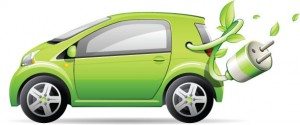 While we may still have to wait awhile for robot butlers and tourist trips to Mars, there’s another sci-fi staple quickly coming into its own: cars with self-driving capabilities. Going from laughably inept to practically roadworthy in just a few years, autonomous vehicles will almost certainly play a significant role in the future of both personal and public transport. Google, the Internet search giant, is perhaps furthest along in its efforts to bring this type of technology to the average driver, but many other companies are racing to catch up. Today, it’s not if Automotive Singularity will ever arrive, but when.
While we may still have to wait awhile for robot butlers and tourist trips to Mars, there’s another sci-fi staple quickly coming into its own: cars with self-driving capabilities. Going from laughably inept to practically roadworthy in just a few years, autonomous vehicles will almost certainly play a significant role in the future of both personal and public transport. Google, the Internet search giant, is perhaps furthest along in its efforts to bring this type of technology to the average driver, but many other companies are racing to catch up. Today, it’s not if Automotive Singularity will ever arrive, but when.
Although pie-in-the-sky dreams of cars that operate themselves have been with us for decades, the first notable event in the modern development of these cars was the DARPA Grand Challenge competition in 2004. The first race was a fiasco, with the entrants mostly crashing after a few miles, but performance improved markedly in subsequent years. Google, after convincing many of the participants in DARPA Challenge events to join its team, began working on its own systems.
These automobiles contain advanced sensing devices, including cameras, radar and LIDAR arrays, which capture snapshots of the surroundings many times per second. They put all this information together to generate a model of the world around them and then consult their inbuilt computer programming and map data to decide what to do. They can accelerate, brake, change lanes, turn and perform all other driving functions without the intervention of a human operator.
Google doesn’t have this field all to itself. Tesla Motors has recently released an over-the-air upgrade to software in its Model S vehicles that implements certain automatic features, like changing lanes and parallel parking. There’s no reason not to do the same for a host of other features throughout its entire product lineup until every Tesla can drive itself. Nissan has announced a target of 2020 to release its take on the driverless formula, developed in conjunction with researchers from MIT, Stanford, Oxford and other institutions of higher learning around the world. Apple is rumored to be working on self-driving cars as well, but there’s a lot of secrecy surrounding its project, and hardly any info has been released about it.
Cars that don’t require human drivers could allow people with reduced mobility to get around more easily. Even people who are physically capable of driving may elect to let the computer handle everything, freeing up their time for leisure or business pursuits. Fleets of vehicles could provide taxi and limousine service without needing to be babysat as they pick up and drop off fares. Even ride-sharing pioneer Uber has indicated its interest in acquiring driverless cars. People inside these cars will be able to stay in constant touch with the Internet, perhaps facilitated by Apple’s HomeKit architecture or similar home automation platforms.
But it’s in the area of ecology that these vehicles may truly shine. Most of the current self-driving models in development are electric, so they don’t release harmful pollutants while traveling on the road. According to the Columbia Gas, cars and trucks account for one-fifth of all U.S. greenhouse gas emissions. When we add in the rest of the transportation sector, including ships and planes, this figure jumps to 30 percent. Clearly, battery-powered, self-driving automobiles could serve an important role in reducing these alarming numbers. Assuming that methods of electricity production become “cleaner” in coming years, this advantage will become even more pronounced. Some electric vehicle charging stations now gather energy through the use of solar panels.
Computer-controlled cars have already proven to be much safer than human drivers, so there’s a high likelihood that much of the safety equipment that’s now standard will become unnecessary in future. If this turns out to be the case, then it could be removed, reducing the weight of vehicles and leading to a concomitant increase in gas mileage. Another factor that could contribute to greater fuel efficiency is the fact that driverless cars, by communicating with each other, could establish traffic patterns that lead to more optimal speeds and less gridlock.
Not only will driverless cars make life more convenient and productive, they’ll also help us become more environmentally friendly. The combination of improved driving techniques, lighter vehicle bodies and renewable sources of propulsive power mean that the old, gas-guzzling, polluting models of cars will become mere historical curiosities.

